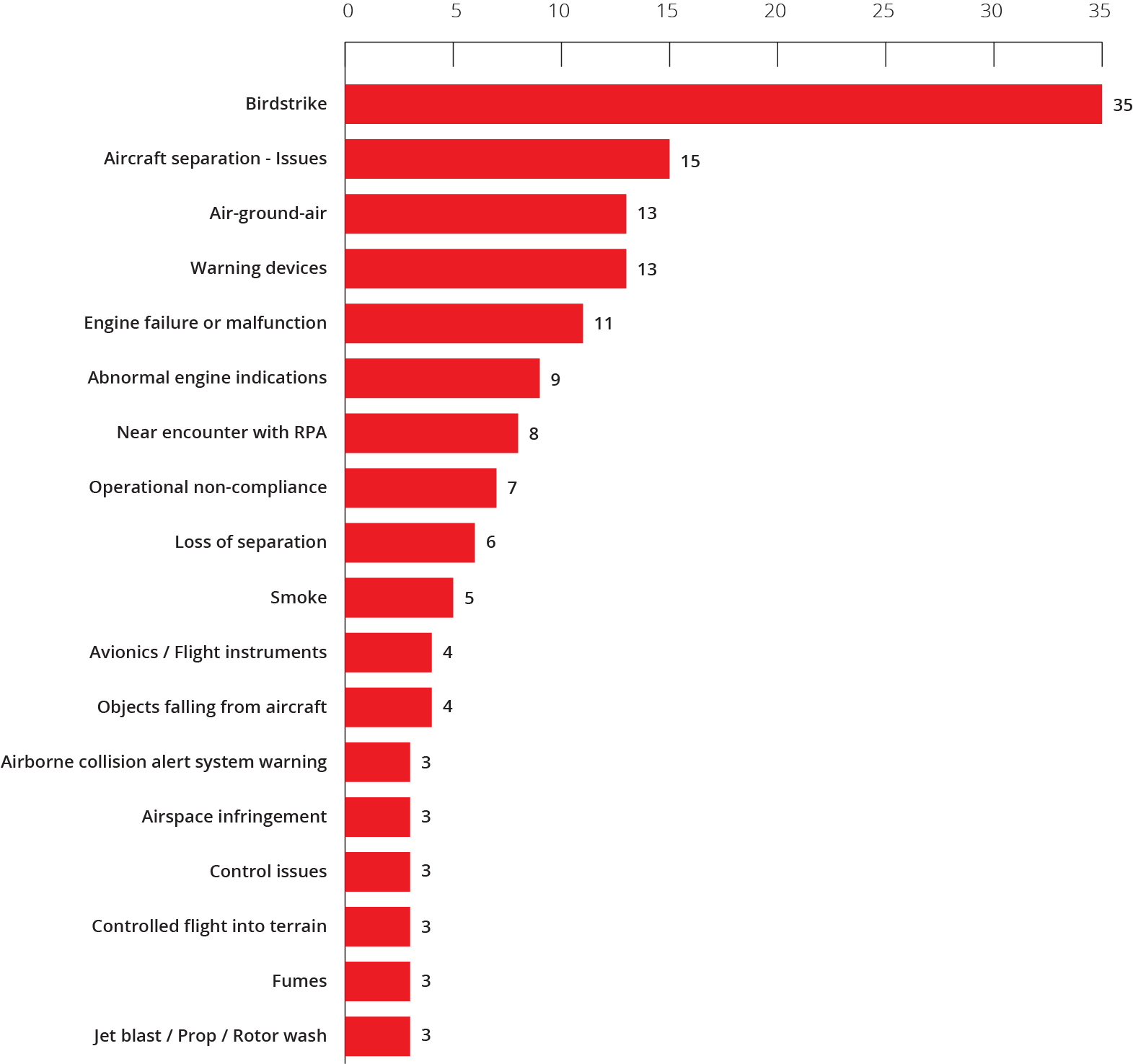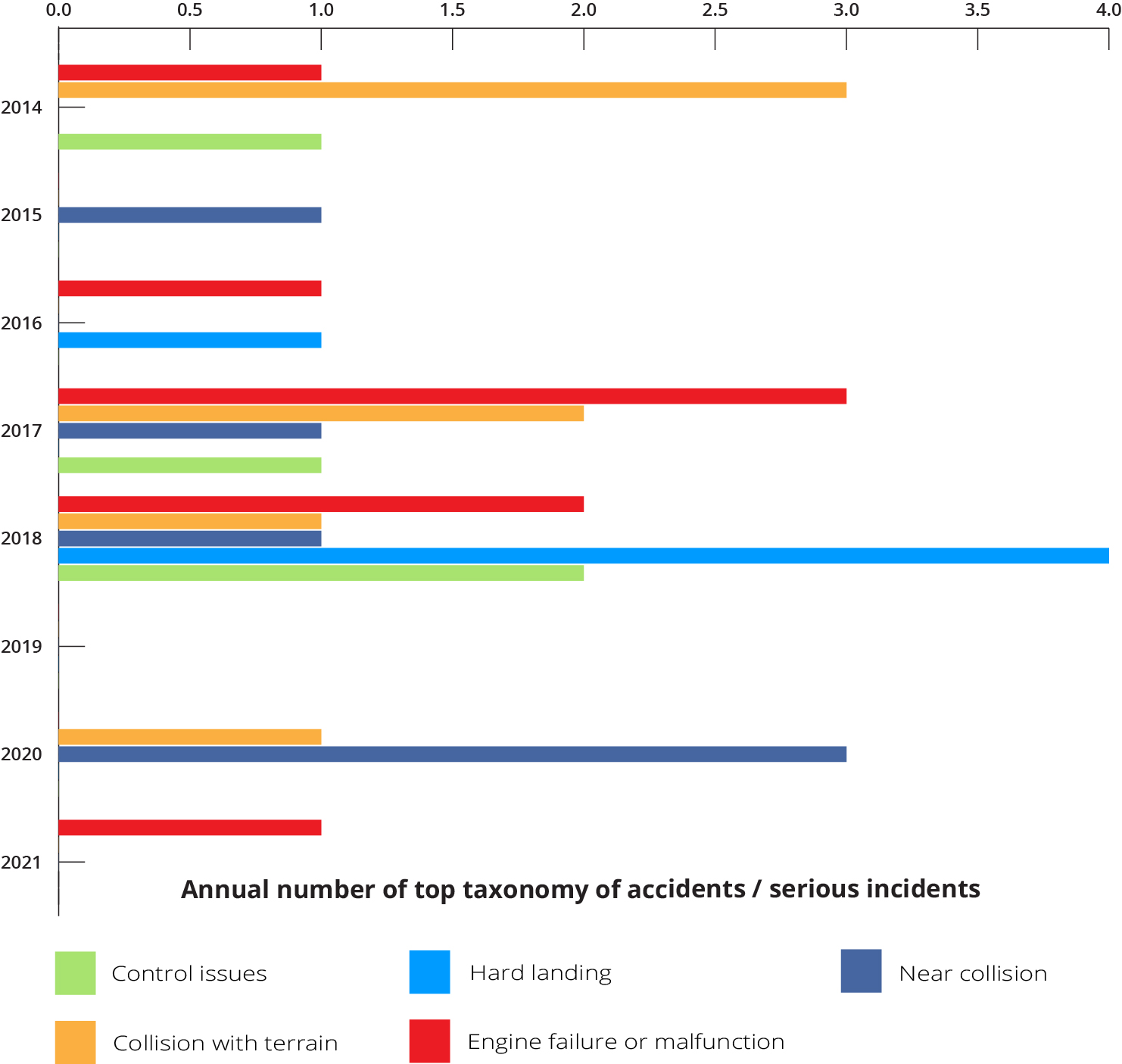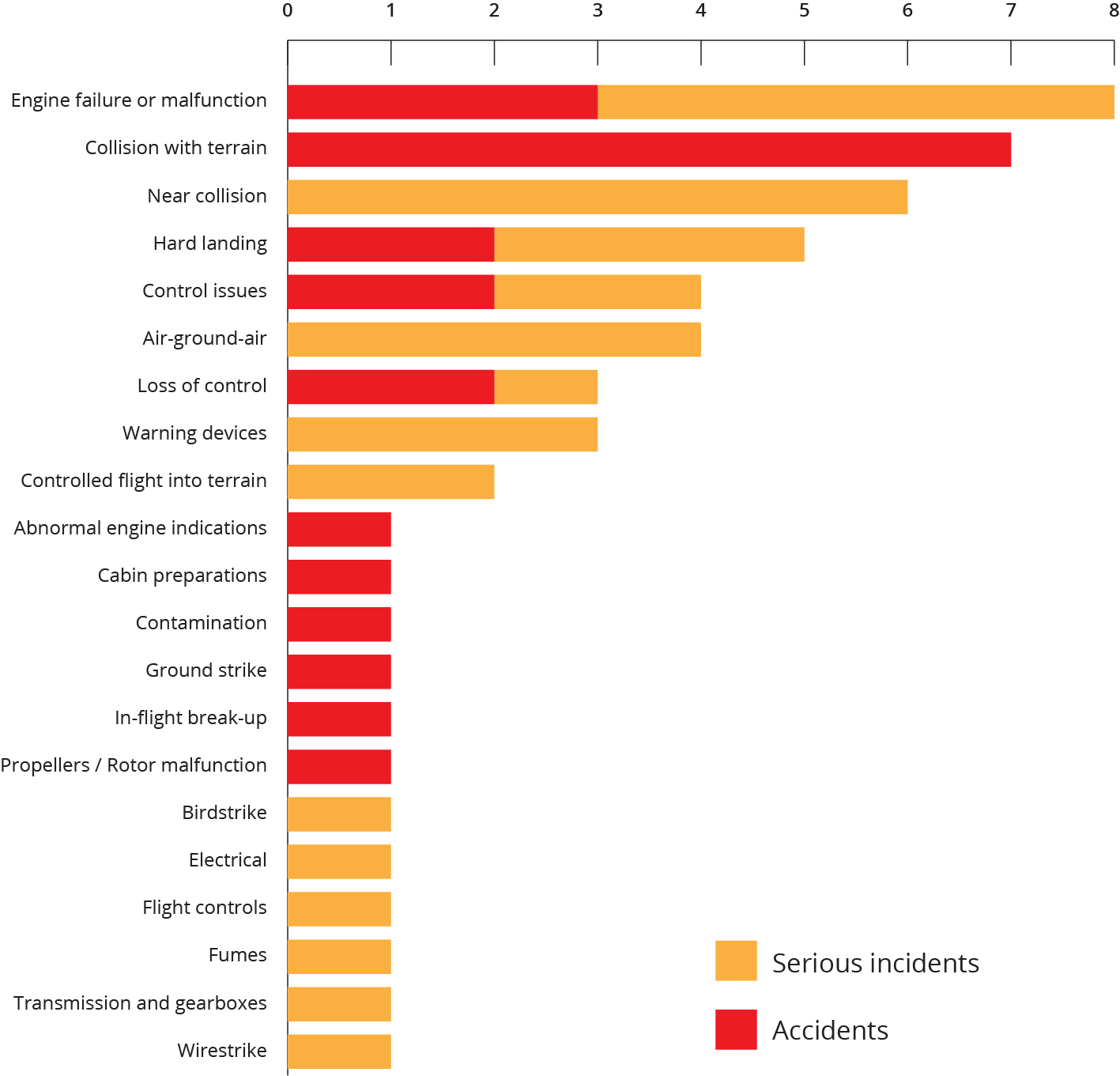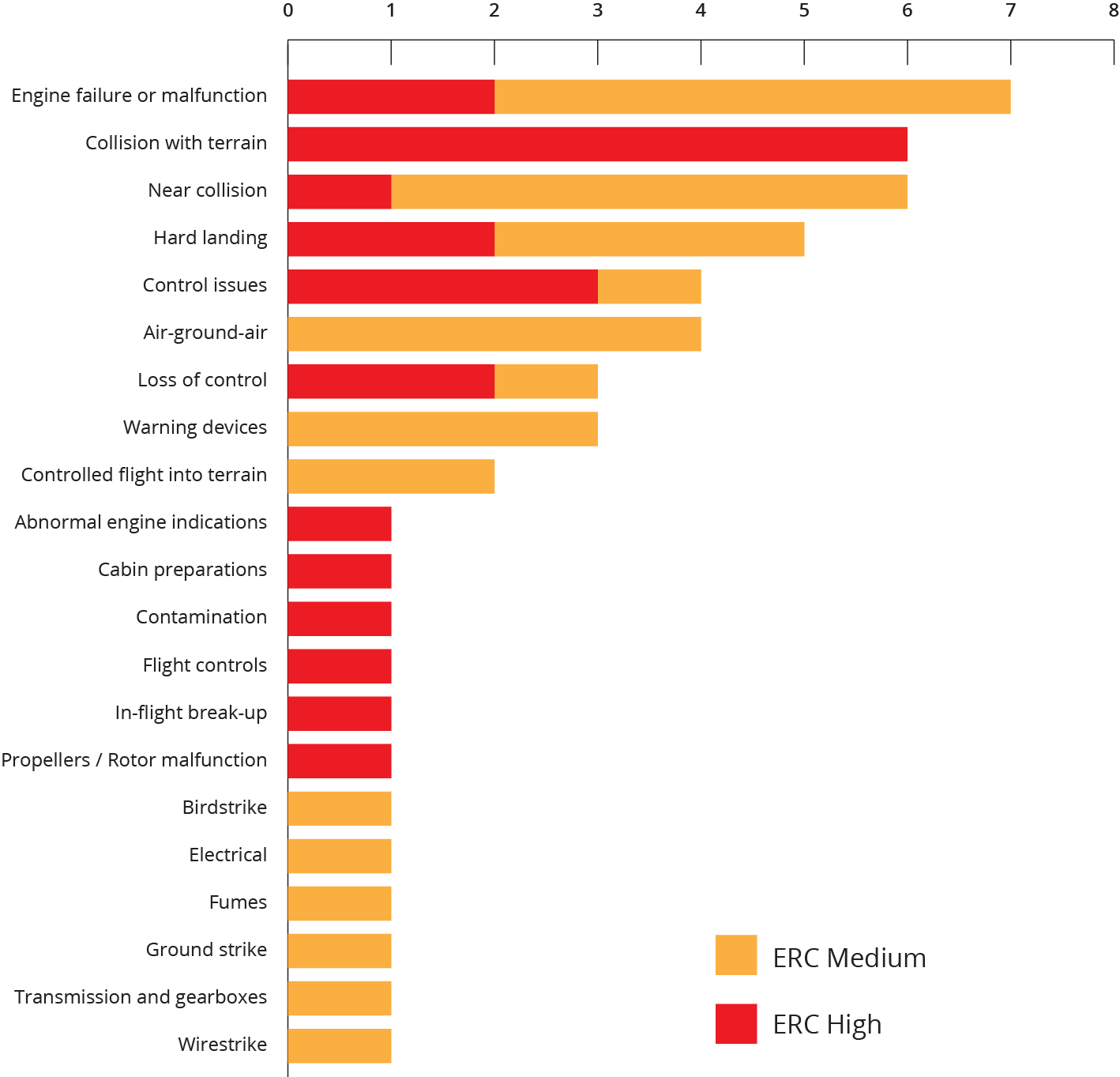Analysis of occurrence types showed that the most common occurrence were:
- bird strike
- aircraft separation
- air-ground communications.
While these are the most prevalent occurrences, they were in most instances identified to be a low risk.
The most common accident and serious incidents were from 2014 to 2021 were:
- engine failure
- collision with terrain
- near collision
- hard landing.
We didn’t identify any strong trends over the period for these occurrence types (refer to graph with the low number of occurrence reports). There were spikes in engine failure, near collisions and hard landings in the last 5 years. These haven't continued in subsequent years.
While the data shows these events occur more often than others, keep in mind the contributing factors. Some events will need further examination to determine the underlying causes.
Occurrence types – event risk classification
Analysing ATSB's event risk classification (ERC) for occurrences in the sector will help you gain further clarity on the sector risk.
ERC scores the potential risk in an occurrence. Analysis of these occurrences shows that the top 5 occurrence types with high and medium risk potential were:
- engine failure or malfunction
- collision with terrain
- near collision
- hard landing
- control issues.
Safety factors
ATSB applies safety factors to certain occurrences to identify underlying conditions or factors that contributed to the occurrence. Safety factors are an event or condition that increases safety risks. This means the increases the likelihood of an occurrence or the consequences associated with an occurrence.
Approximately 34% of occurrences in the small air transport helicopter operations have safety factors assigned by the ATSB. The most frequent safety factors between 2014 and 2021 were:
- monitoring and checking
- communicating and coordinating
- assessing and planning
We found these occurred factors the most frequently, even when considering the high or medium ERC applied to the occurrence.





